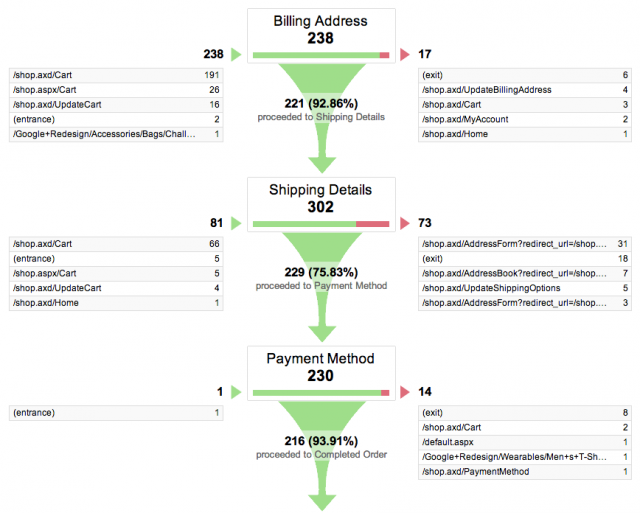Google Analytics goals are a fantastic way to measure key activities on your website and enable a slew of analytics reports right in the GA interface. You are doing yourself a disservice if you haven’t set them up. Make sure you do it, make sure you do it correctly, and make sure you do it ASAP!
Our analytics team sees heaps of common mistakes when working with companies (large and small) that are easily avoidable. In this article I will provide a few tips and tricks to make them work better for you and ensure your data is reliable.
In summary, don’t lose time, make sure your goals are tidy and improve your Google Analytics reports today.
1. Goals only collect data once they are configured
![]()
Unfortunately, Google Analytics Goals are not retroactive. When you set up a goal, the way GA processes your data changes immediately, all of a sudden GA will store additional data for you. You can access this data in a variety of reports across audience, acquisition, behaviour and conversion reports right in the user interface.
So, even though you may have already been tracking your key activities, now you can easily view performance across dozens of new dimensions like traffic channel or landing page.
2. Goals fire once per session per goal
![]() Goals function as counters and once a particular goal has fired, that’s it for the remainder of that user’s session. A user can trigger all twenty goals in a session but each goal will only be captured once. So even if a user submits your promotion form offering free Nutella for life 100 times in one session, that goal will only fire once. That’s right, once.
Goals function as counters and once a particular goal has fired, that’s it for the remainder of that user’s session. A user can trigger all twenty goals in a session but each goal will only be captured once. So even if a user submits your promotion form offering free Nutella for life 100 times in one session, that goal will only fire once. That’s right, once.
Another key component to consider, in view of this fact, is whether or not you want to aggregate or separate conversions for certain activities across your site. For example, if you have PDF downloads on your product page and also on your careers page, you may want to set these up as two unique goals. Make sure to lay out a measurement plan defining your site KPIs and align your goals with your website or mobile app objectives.
3. Goal funnels don’t impact completions, they apply to Funnel Visualisations

While it is very useful to set up goal funnels, they solely aid in reporting the goal Funnel Visualisation report. A goal with a required funnel will not have a lower number of goals completions than the similar goal with a required funnel (except in the Funnel Visualization report). If you want to track two different paths to conversion your best bet is to view the funnel visualisation report or tag the paths differently. Additionally, you might also consider using the Behavior Flow report.
And a word to the wise, if you do set up funnelled goals be sure not to aggregate the goal values as you will be double counting conversions!
4. You can use Regular Expressions (RegEx) to build more robust goals
Goals can be turbo-charged when you combine them with regular expressions (regex). Regular expressions are operational functions which allow for advanced conditional statements in input bars (i.e. you can even use them for Google searches). For example, if you want a goal to fire on multiple pages or events you can utilise operators like a RegEx pipe or ‘any string’ to set it up. RegEx is fun! For a RegEx library and testing visit regexr.com.

5. Goals values can be used to measure relative value
Goal values can be used outside of a relationship to currency. They can also be used relationally. For example, if you’ve set ten goals on your site you can define the importance of each activity on a scale in relation to each other. As a user navigates through your site they may fire off various goals. I like to think about this as a pinball machine or Mario Brother’s video game. As a key activity occurs, users collect value, or coins.
Once you are tracking relational goal value you can go into your most reports, for example the location report, select ‘All Goals’ and compare the total goal value / sessions by each country. This will tell you not just which country was most likely to convert but also which country was most engaged with the important, valuable sections of your site.
If you are already using goals properly, good on ya! If not, get started today or reach out to a qualified professional to get you up and running.








